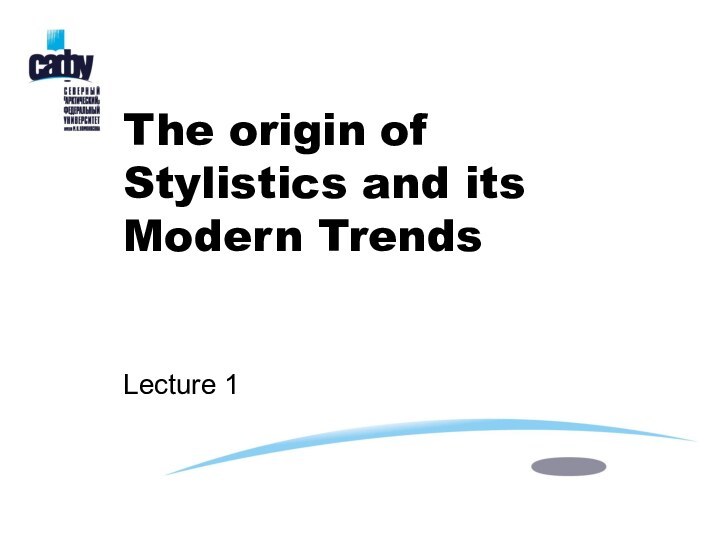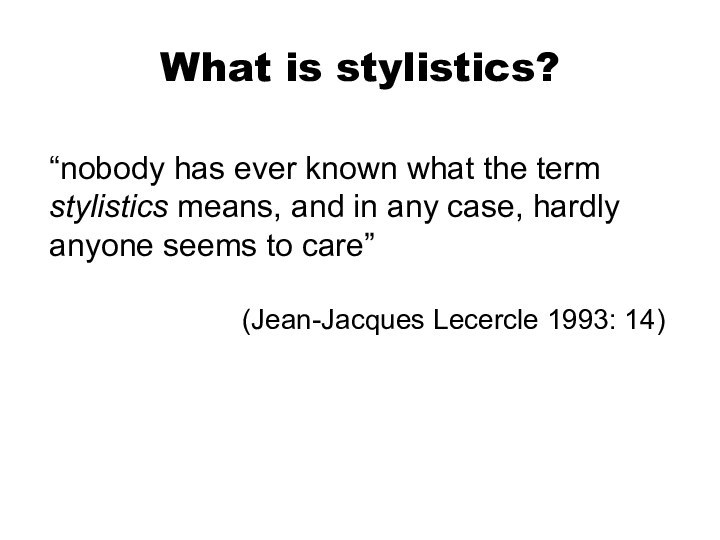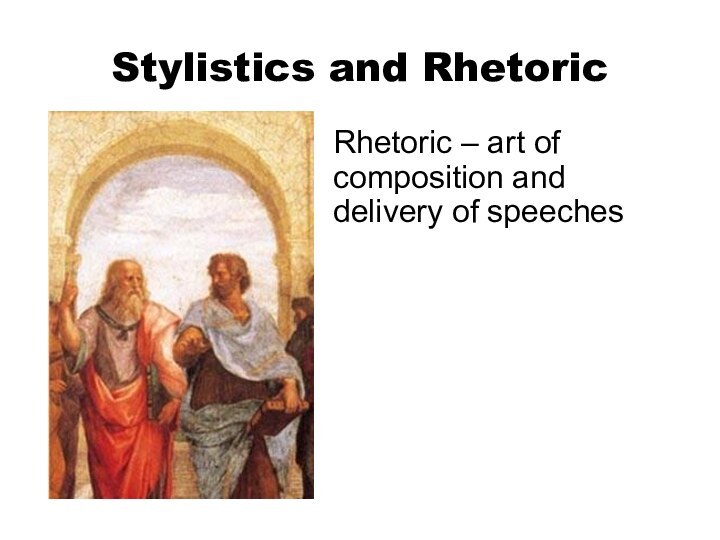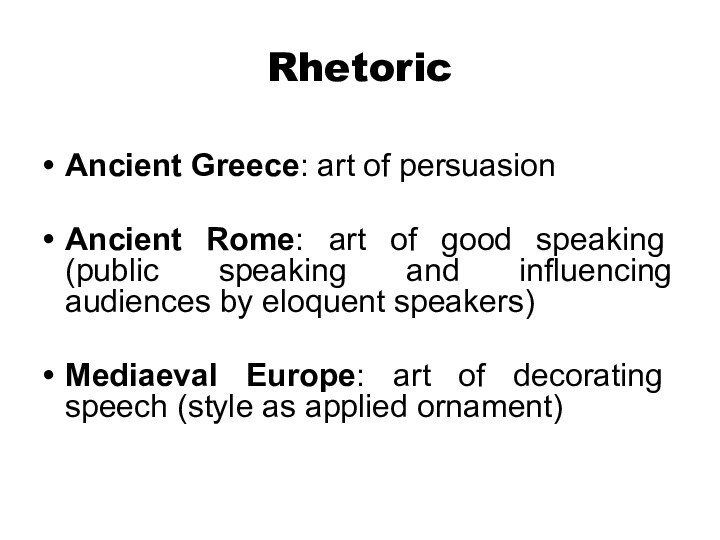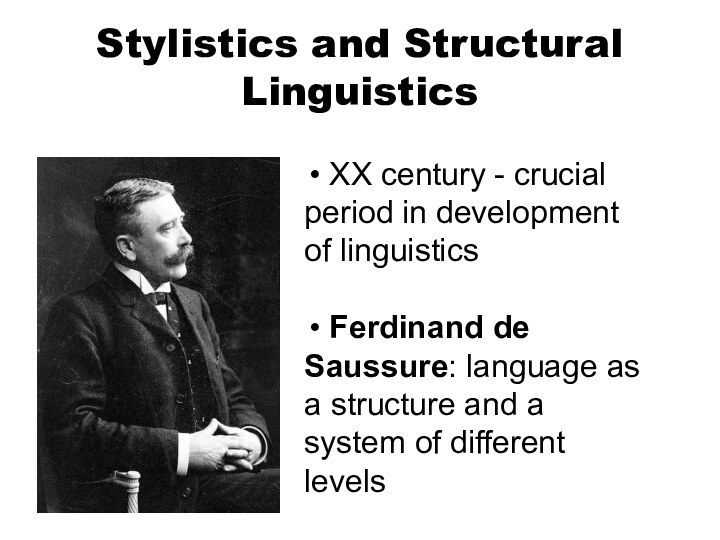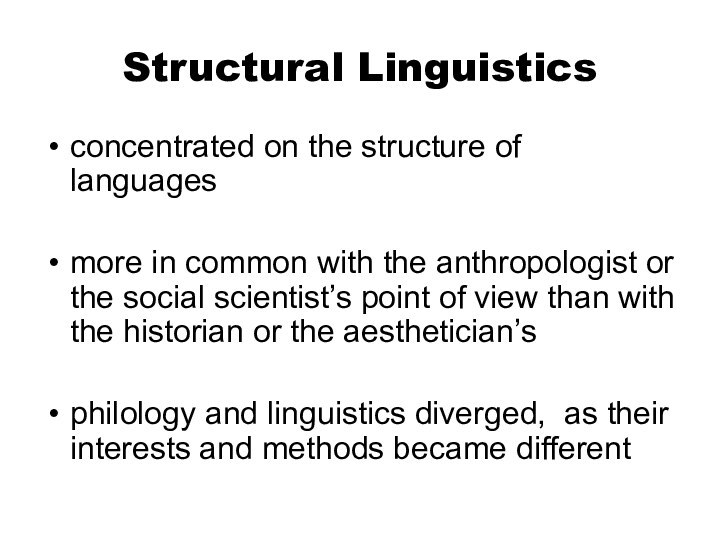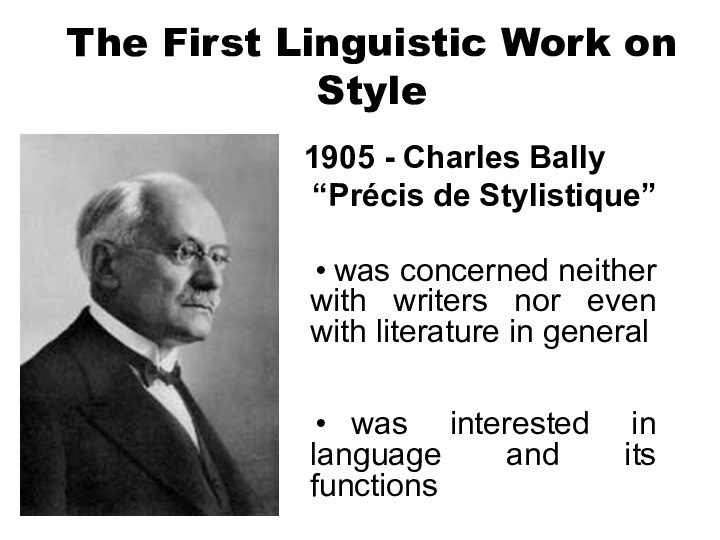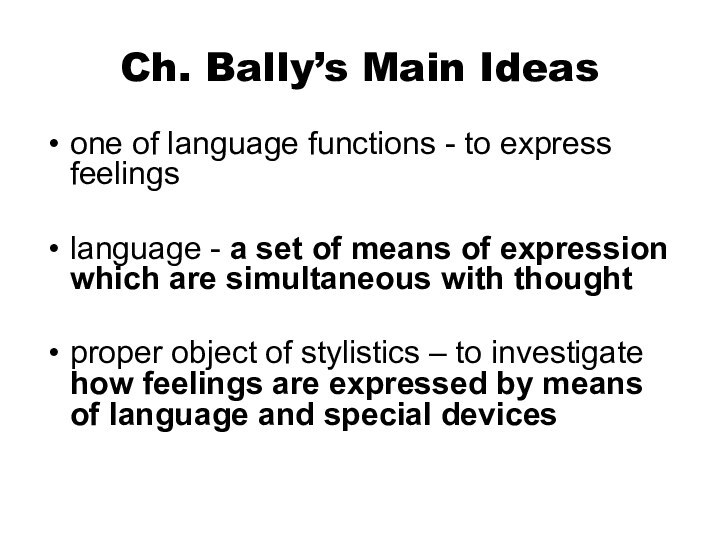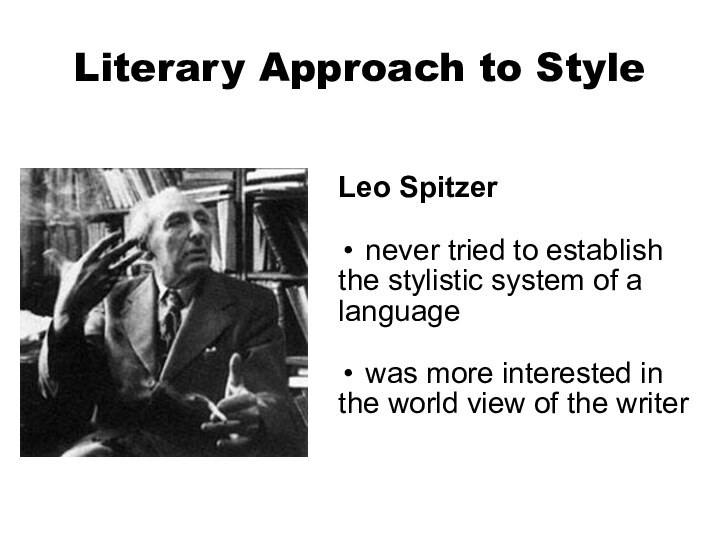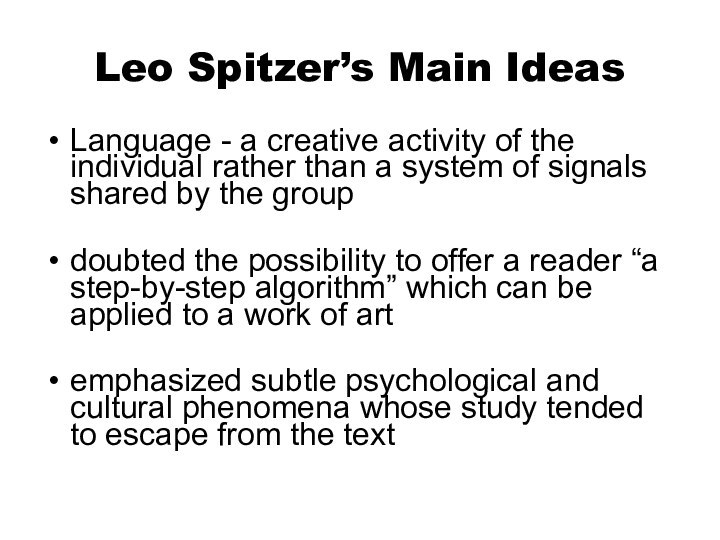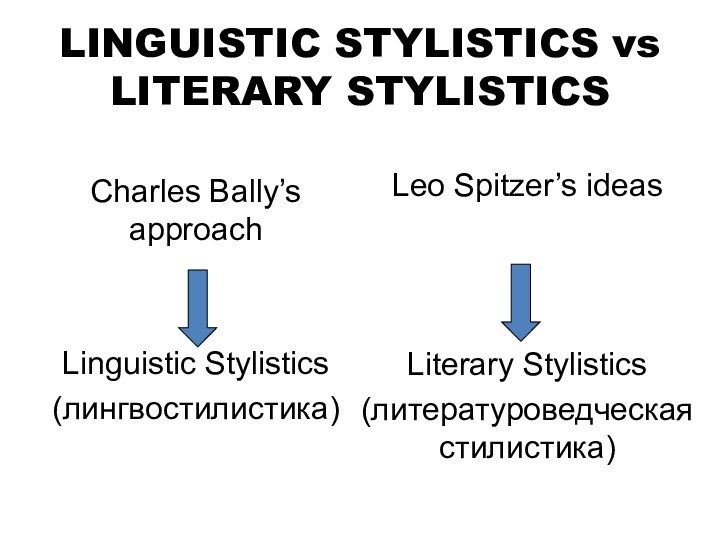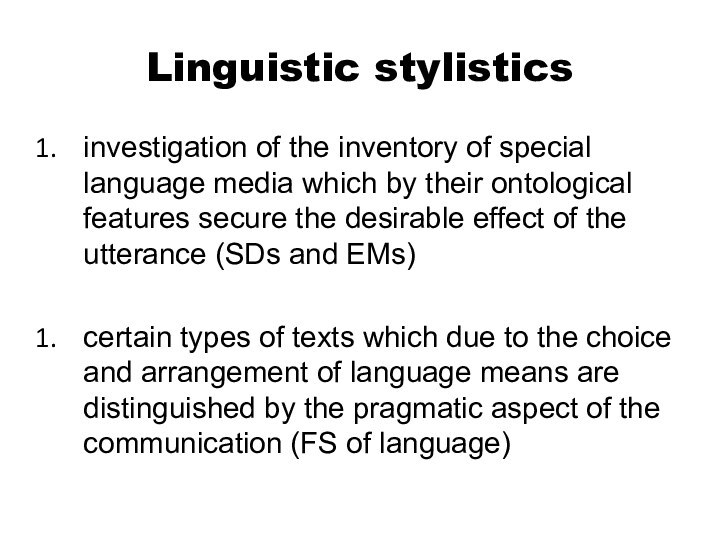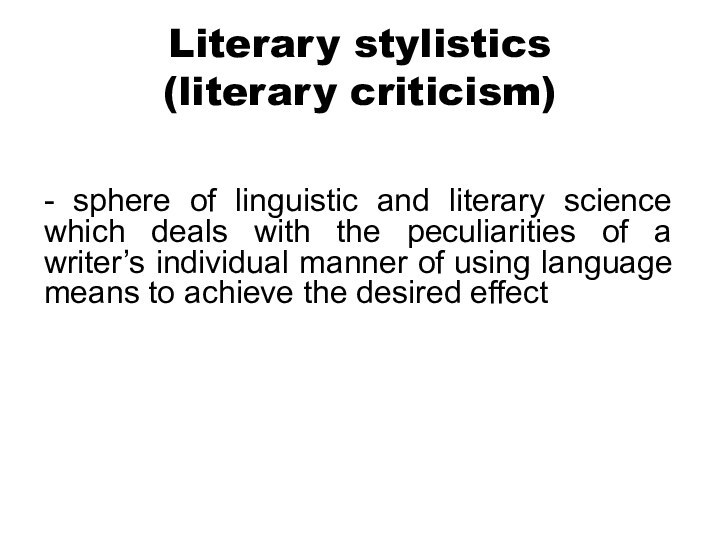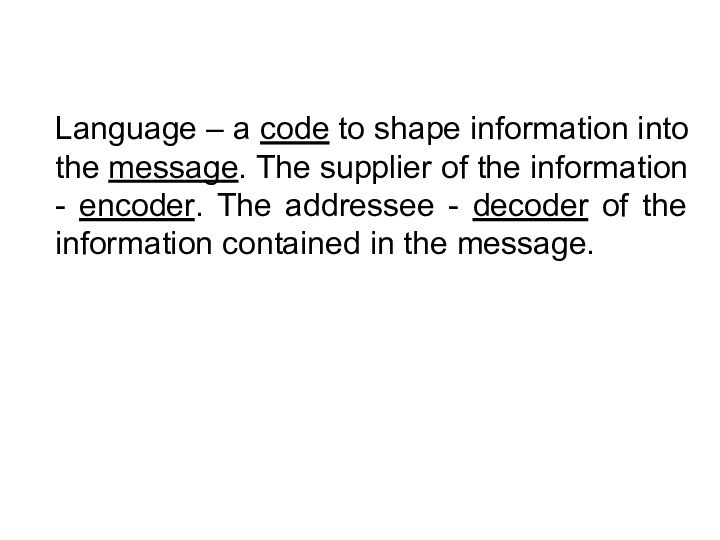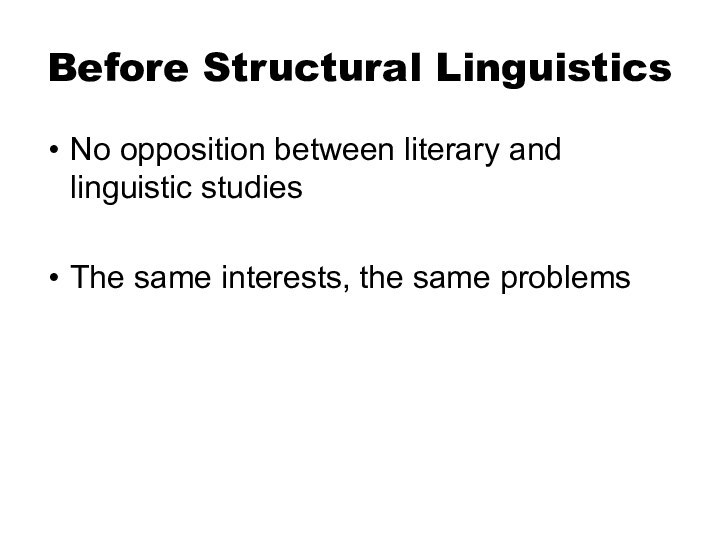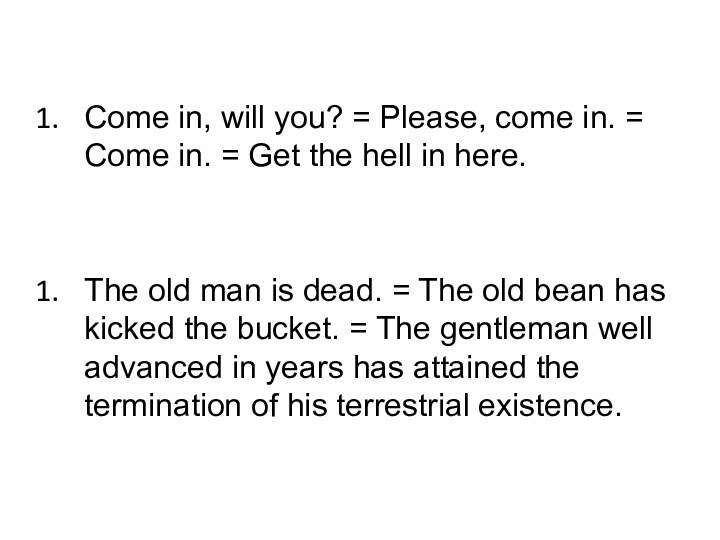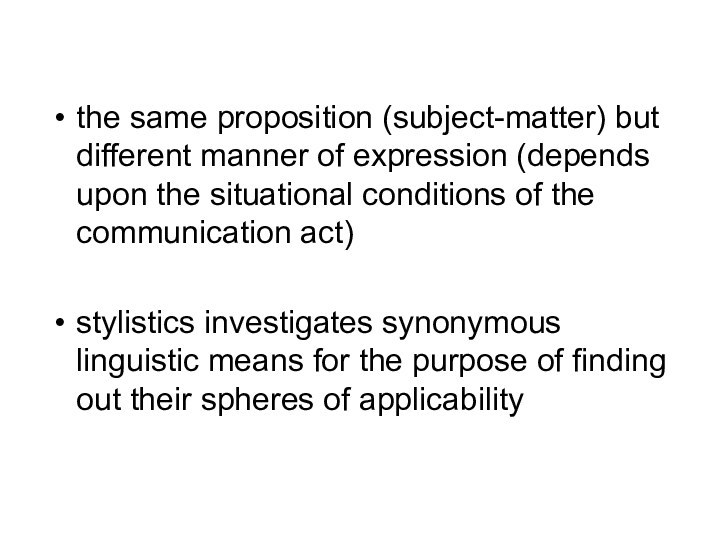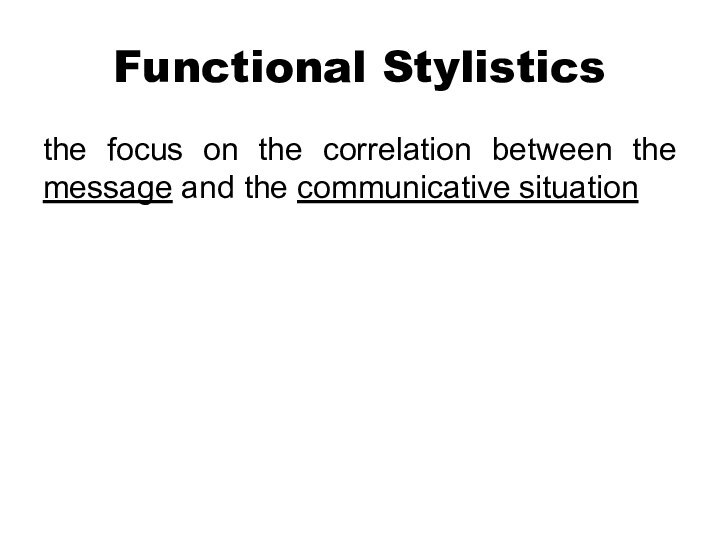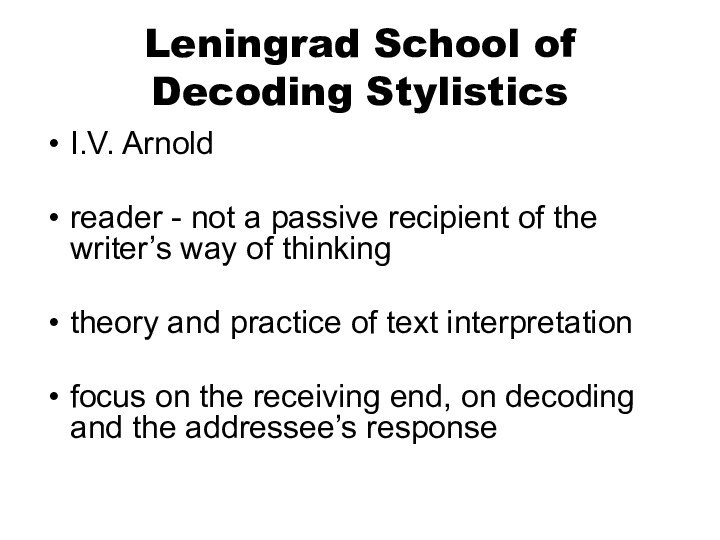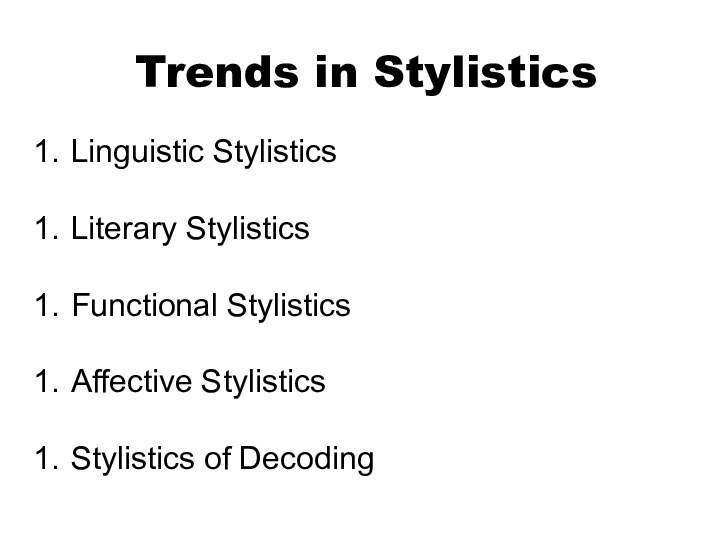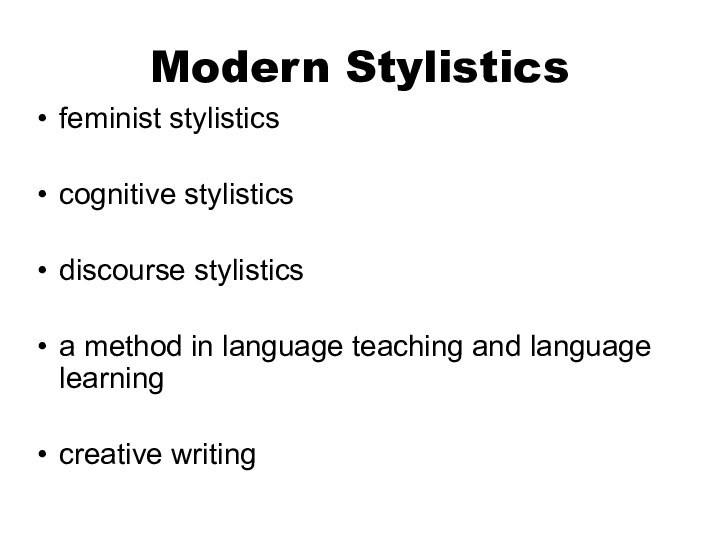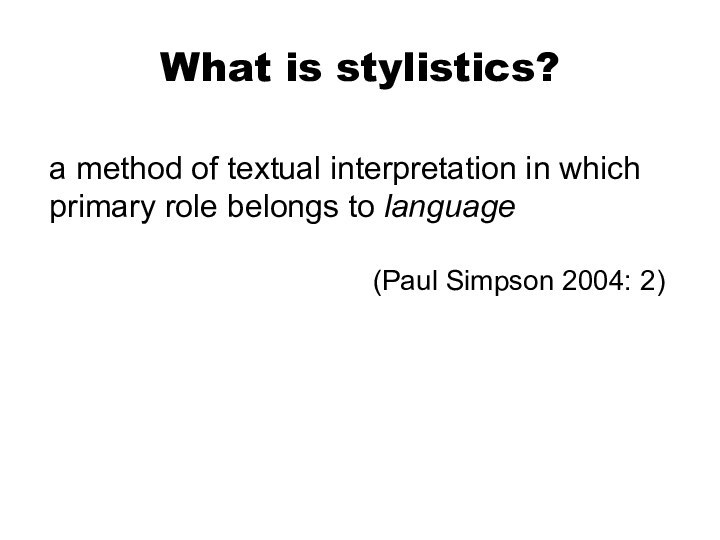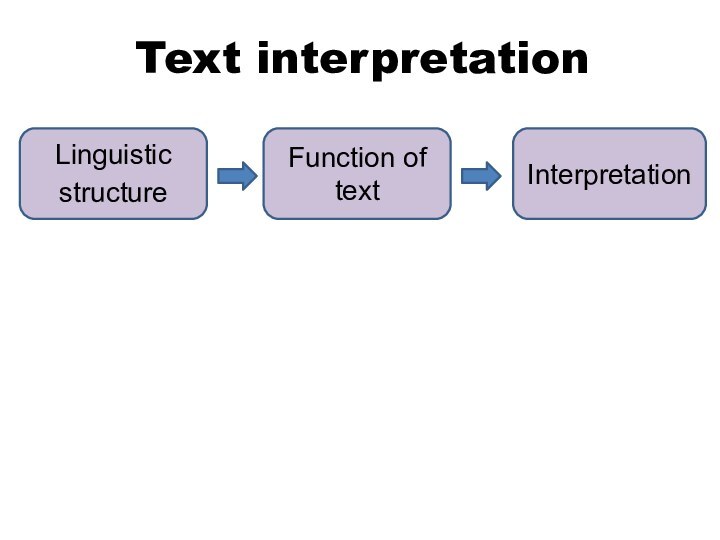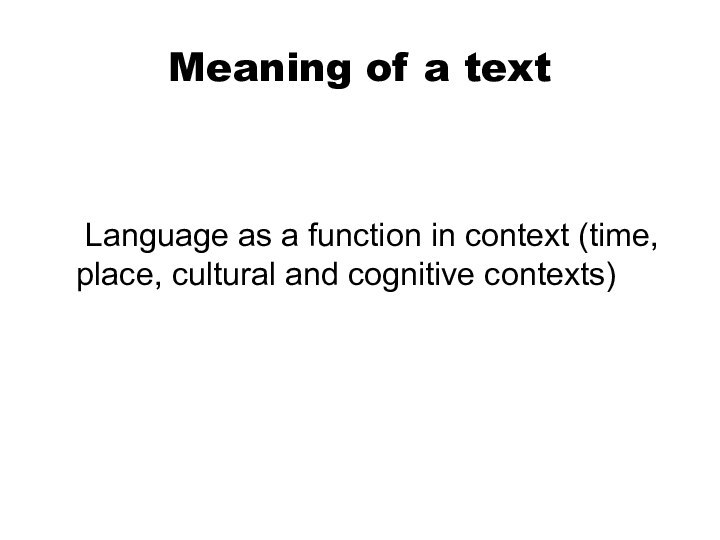Слайд 2
What is stylistics?
“nobody has ever known what the
term stylistics means, and in any case, hardly anyone
seems to care”
(Jean-Jacques Lecercle 1993: 14)
Слайд 3
Stylistics
from Lat. “stilos” (a sharp stick used for
writing on wax tablets)
not only an instrument for writing,
but
manner of writing
Слайд 4
Stylistics and Rhetoric
Rhetoric – art of composition and
delivery of speeches
Слайд 5
Rhetoric
Ancient Greece: art of persuasion
Ancient Rome: art of
good speaking (public speaking and influencing audiences by eloquent
speakers)
Mediaeval Europe: art of decorating speech (style as applied ornament)
Слайд 6
Stylistics
borrowed from rhetoric
technical equipment
traditional object (STYLE)
Слайд 7
Stylistics and Structural Linguistics
XX century - crucial
period in development of linguistics
Ferdinand de Saussure: language
as a structure and a system of different levels
Слайд 8
Structural Linguistics
concentrated on the structure of languages
more in
common with the anthropologist or the social scientist’s point
of view than with the historian or the aesthetician’s
philology and linguistics diverged, as their interests and methods became different
Слайд 9
1905 - Charles Bally
“Précis de Stylistique”
The First
Linguistic Work on Style
was concerned neither with writers
nor even with literature in general
was interested in language and its functions
Слайд 10
Ch. Bally’s Main Ideas
one of language functions -
to express feelings
language - a set of means
of expression which are simultaneous with thought
proper object of stylistics – to investigate how feelings are expressed by means of language and special devices
Слайд 11
Literary Approach to Style
Leo Spitzer
never tried to establish
the stylistic system of a
language
was more interested in
the world view of the writer
Слайд 12
Leo Spitzer’s Main Ideas
Language - a creative activity
of the individual rather than a system of signals
shared by the group
doubted the possibility to offer a reader “a step-by-step algorithm” which can be applied to a work of art
emphasized subtle psychological and cultural phenomena whose study tended to escape from the text
Слайд 13
LINGUISTIC STYLISTICS vs LITERARY STYLISTICS
Charles Bally’s approach
Linguistic
Stylistics
(лингвостилистика)
Leo Spitzer’s ideas
Literary Stylistics
(литературоведческая стилистика)
Слайд 14
Linguistic stylistics
investigation of the inventory of special language
media which by their ontological features secure the desirable
effect of the utterance (SDs and EMs)
certain types of texts which due to the choice and arrangement of language means are distinguished by the pragmatic aspect of the communication (FS of language)
Слайд 15
Literary stylistics
(literary criticism)
- sphere of linguistic and
literary science which deals with the peculiarities of a
writer’s individual manner of using language means to achieve the desired effect
Слайд 16
Model of Communicative Act
R. Jakobson: six components of
any speech event
addresser
addressee
message
code
contact
context
Слайд 17
Language – a code to shape information into
the message. The supplier of the information - encoder.
The addressee - decoder of the information contained in the message.
Слайд 18
Before Structural Linguistics
No opposition between literary and linguistic
studies
The same interests, the same problems
Слайд 19
Come in, will you? = Please, come in.
= Come in. = Get the hell in here.
The
old man is dead. = The old bean has kicked the bucket. = The gentleman well advanced in years has attained the termination of his terrestrial existence.
Слайд 20
the same proposition (subject-matter) but different manner of
expression (depends upon the situational conditions of the communication
act)
stylistics investigates synonymous linguistic means for the purpose of finding out their spheres of applicability
Слайд 21
Functional Stylistics
the focus on the correlation between the
message and the communicative situation
Слайд 22
Affective Stylistics
M. Riffaterre
focus on the effect of the
message, on the output of the act of communication,
on its attention-compelling function
features of linguistic utterance that are intended to impose the encoder’s way of thinking on the decoder
Слайд 23
Leningrad School of Decoding Stylistics
I.V. Arnold
reader - not
a passive recipient of the writer’s way of thinking
theory
and practice of text interpretation
focus on the receiving end, on decoding and the addressee’s response
Слайд 24
Trends in Stylistics
Linguistic Stylistics
Literary Stylistics
Functional Stylistics
Affective Stylistics
Stylistics of
Decoding
Слайд 25
Modern Stylistics
feminist stylistics
cognitive stylistics
discourse stylistics
a method in language
teaching and language learning
creative writing
Слайд 26
What is stylistics?
a method of textual interpretation in
which primary role belongs to language
(Paul Simpson 2004: 2)
Слайд 27
Text interpretation
Interpretation
Function of text
Linguistic structure
Слайд 28
Meaning of a text
Language as a function in
context (time, place, cultural and cognitive contexts)
